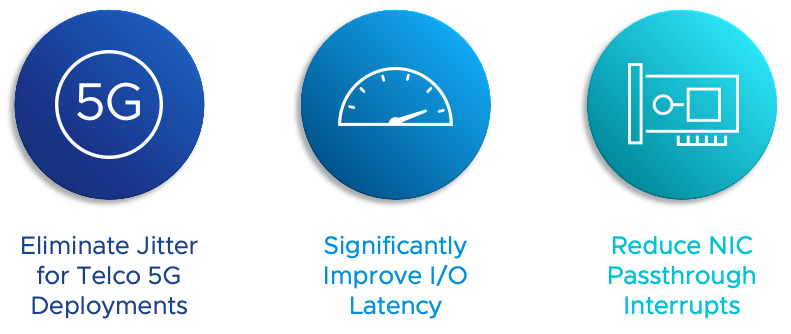More Support for Telco Latency Sensitive Workloads

With the release of vSphere 7 Update 2, there's a ton of performance improvements and added support for NVIDIA Ampere GPU's and AMD EPYC CPU packages to name a few. In lines of those enhancements there's also a lot of 'under the hood' vSphere kernel improvements in vSphere 7 Update 2, allowing for greatly improved I/O latency. Those are of significant importance for Telco 5G virtual Radio Access Networks (vRAN) deployments.
5G Applications' Need for Low Latency
Telco operators are virtualizing their 5G Telco network deployments while moving to a cloud-type deployment at the edge. This brings forward a number of unique requirements to support Telco customers' 5G rollout.
Data-plane 5G applications in the Telco edge are very latency sensitive, especially with respect to network I/O. There was a need to further identify and reduce jitter in ESXi by isolating kernel interferences and eliminating unnecessary noise sources in an iterative fashion. This in order to provide a consistent run-time environment for low latency virtual machines that run on the Telco edge.

Latency Optimizations
In order to support the vRAN application on ESXi, the minimum requirement is to be as close to bare-metal as possible. That is why Teclo customers typically use Network Interface Cards (NICs) in passthrough mode using (Dynamic) DirectPath I/O in ESXi to minimize overhead. However, there is a significant penalty for interrupts on these passthrough devices due to virtualization overhead. The work done in vSphere 7 Update 2 is to reduce the device interrupts for NICs in passthrough. The net result being improved I/O latency.
Make sure to read everything about running Telco applications on vSphere here!!
